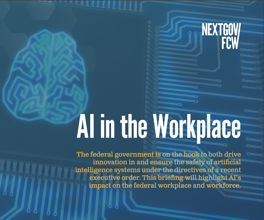8 objections to playing it safe with emerging IT
Readers take issue with a former DHS official who urges caution when it comes to cloud computing, agile development and other IT fads.
“Please don’t build the next space shuttle” using agile development techniques, wrote columnist Michael Daconta, a former official at the Homeland Security Department.
“Yes, don’t build the next space shuttle with agile development,” one reader responded. “But not everything is a freaking space shuttle.”
That exchange reflects the spirit of the debate that ensued when Daconta’s column, originally written for Government Computer News, appeared on FCW.com earlier this week.
Daconta wanted to make a simple point: Government IT managers should not be taken in by some of the technology creating a lot of buzz in the commercial market.
He focused on six specific technologies: Cloud computing (“a red herring”), Web 2.0 (“not pixie dust”), agile development (“a manager’s nightmare”), data standards (“cannot be market driven”), service-oriented architecture (“has not yet convincingly addressed older applications”) and Web application development (“still a kludge”). You can read the full article here.
Some readers took issue with his characterization of specific technology, such as agile development or cloud computing. But others were more concerned about what they saw as the broader message: That agencies need to play it safe when it comes to IT.
Not everyone disagreed with him. “Government cannot be safely on the cutting edge except, possibly, in research areas,” KWM commented. “Government services must be stable to service the public. Technology should usually only be used that has proven itself in the private arena.”
“I know of many managers who would toss millions of dollars away on the latest thing without a thought to whether the technology or process is usable or needed,” wrote j357. “Our approach is to research, build a reasonable set of requirements, [run a] pilot and move to limited production before deploying full scale.”
However, other readers were horrified. Here is a sampling of the comments we received:
* I sincerely hope that people that read the article did read the comments and how one can be easily fooled to believe that progress is the source of all evil. This article should be removed from Federal Computer Week, not because I don't like it, but because it is one sided.
* Wow, wonderful article. Finally the truth. Contractors and consultants are going to hate this one. LOL. -- Clarence
* The article raises some valid questions. However, the message relayed is 'wait.' Wait and wait and wait because this is not ready yet, that is lacking something else etc. If the government is waiting (as it has been doing in the past) then it will be operating with technology of the last decade and not this one thus making it even more inflexible and impossible to produce results.
* The time has come to celebrate those leaders who are embracing the power of Web 2.0, cloud, agile computing and much more to increase efficiency, collaboration, transparency, productivity instead of government waste! I agree there can be challenges to some of these strategies, but Mike Daconta would be better helping to educate the government on how to appropriately and effectively utilize these technologies to improve our government — not just bashing progress.
* I love my job and support our government 110 percent, there are agencies within our government who are even today, several years behind in technology. You don't have to be cutting edge, but at least make a stronger effort to get with the times!! -- JWB
* The private sector is already turning the reigns over to the younger generation and their ideas. It will take longer in government because there is "no" turnover. But I look forward to that day. I'm sorry Mr. Daconta but it seems as if IT has passed you by.
* When are we going to get past hyperbole and hype and have meaningful conversations about return on assets, net present value, and leveraging the substantial investments already made in IT across the federal sector? This article shows why so many people only view IT as a cost center and not a strategic service or enabler of services. Let's change the underlying conversation.
* Buggy whip, anyone?





